Ostrog monastery in Montenegro: description and directions
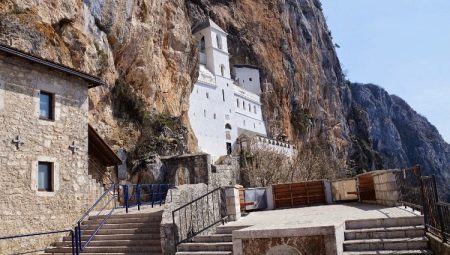
Hundreds of thousands of pilgrims annually go to holy places to honor them with their visit, as well as ask for health, happiness, vitality from heavenly intercessors. There are places that the whole world knows about, for example, Jerusalem. There are those that not everyone has heard of or have approximate information. For example, many probably know the name of Vasily Ostrog by ear, but they know almost nothing about the monastery associated with it. But this is one of the main attractions of Montenegro.
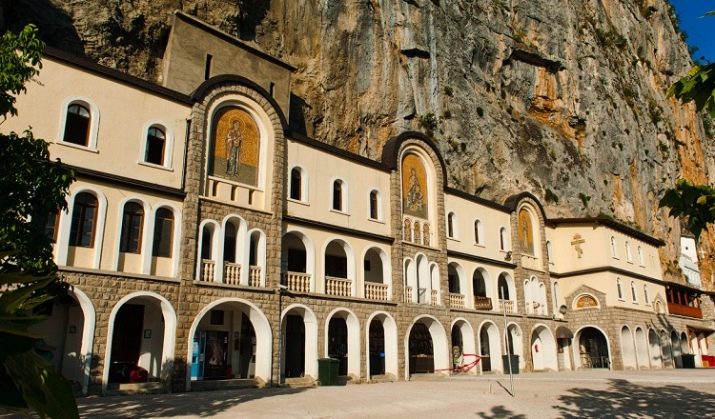
A bit of history
Ostrog is the name of the current Orthodox Serbian monastery. He is remarkable in many ways. The first is its location. The monastery was built right in the rock at an altitude of 900 m above sea level. And this really special location of the monastery attracts more and more pilgrims to its walls. But not only the geography of the place makes the building unique.
The Ostrog monastery in Montenegro is a well-known history, captured in various sources, which has come down to our times in a recognizable form. The 17th century can be considered the founding date of the monastery. We must thank Vasily of Ostrog, Metropolitan-Bishop of Herzegovinsky, for this. He was canonized after his death, and today he is one of the most revered saints in Serbia and Montenegro.
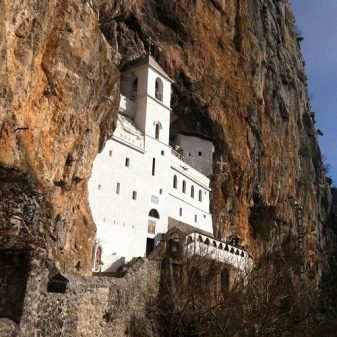
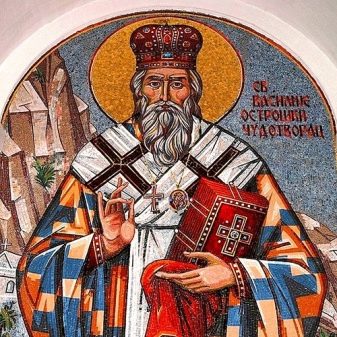
The real name of Vasily Ostrozhsky is Stoyan Yovanovitch. From childhood, parents, wishing their son a better life, sent him to his uncle in a monastery. At Trebinje he took monastic vows, choosing for himself the life of an ascetic forever. Becoming a bishop was a difficult decision for this man, he did not do it with great desire. But fortunately, Vasily agreed and subsequently built that very outstanding monastery in the mountains.He built it all his life, only death stopped the construction, which made a lot of sense for the bishop.
Interesting fact! Seven years after the repose of Basil of Ostrog, the abbot of the monastery of St. Luke has a dream where the deceased bishop asked to open his grave in Ostrog. The dream was repeated again and again, which was perceived as a heavenly sign, and together with the monks the abbot really went to Ostrog. Fasting and prayer at the grave lasted seven days, only after that the last refuge of Vasily Ostrozhsky was opened. His body was well preserved, the aroma of basil emanated from him. The relics were transferred to the Upper Monastery, and to this day they rest in the Vvedenskaya Church.
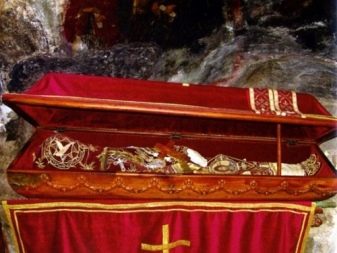
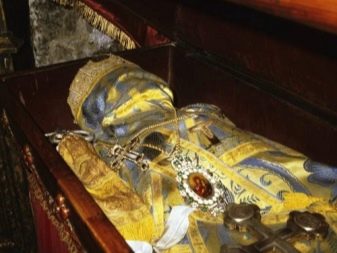
Alas, there was no continuous peace for the monastery for all the centuries of its existence. We had to defend the shrine on the rock, mainly from the Turks. And during the Second World War, a German bomb fell into the Church of the Holy Trinity on the monastery territory. Isn't it miracles that the bomb broke, but never exploded ?! The fragments of the shell are still kept in the monastery.
If we go back to Vasily Ostrozhsky, whose name is sacred for the Orthodox, there is a legend that a gorgeous vine grew at the place of his death. To this day, many women who dream of giving birth to a baby believe that it is grapes from the place of the saint's repose that will help them in this.
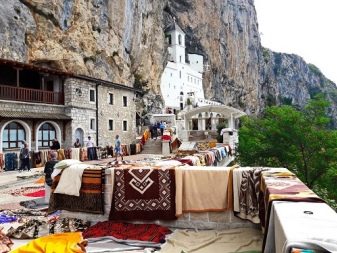
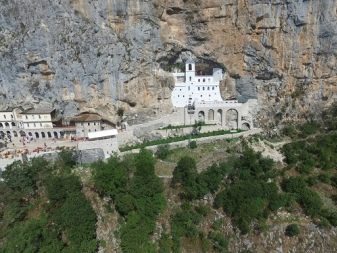
What to see?
The territory of the Ostrog monastery is interesting in itself - there are several objects that will gradually open to the visitor.
Therefore, when planning an excursion to this temple, keep in mind that it will take a lot of time (if you really want to see everything).
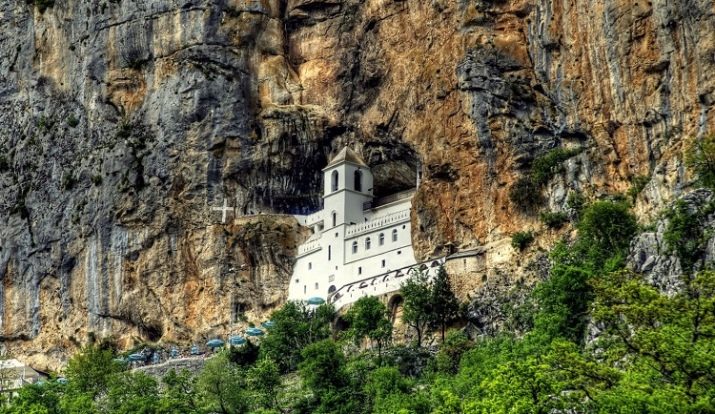
Lower monastery
For example, the Lower Monastery was built relatively recently, in the 19th century. It has several cells, the Church of the Holy Trinity, as well as a guest house that serves as a shelter for the night for pilgrims. One bed will cost about 5 euros. The visitor will be woken up early, around 5 am.
In this very church the relics of the youth Stanko rest - this is a 12-year-old boy, his hands were cut off during the difficult years of Turkish persecution because he did not let go of the Orthodox cross. After a martyr's death, the boy was canonized.
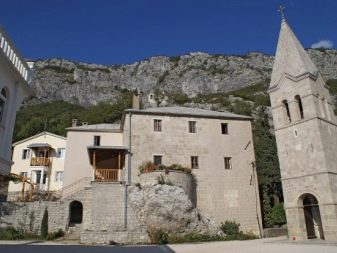

Upper monastery
It is located three kilometers from Nizhny Novgorod. We must immediately prepare for the fact that the road to this part of the shrine is dangerous, difficult for any traveler, in a certain sense, risky. Although believers rarely use it, there is also a short way, the forest one.
On the territory of the Upper Monastery there are two churches - Vvedenskaya and Krestovozdvizhenskaya. Many and many pilgrims rush to Vvedenskaya, which can be understood: Vasily Ostrozhsky himself spent 15 years here in tireless prayers. It is surprising that the size of the shrine is more than modest - 3 by 3 meters. At the entrance you can see a carved icon of the bishop on the rock.
As for the relics, there is a silver candlestick and a prayer book dating back to the 18th century.

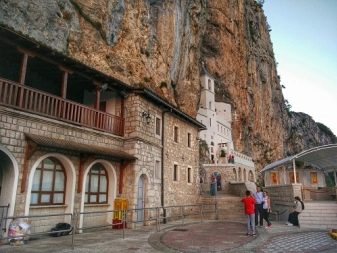
Two churches in the caves managed to survive, since there were no wooden structures in them. Now in the monastery these are the most important and revered places. The monastic cells were rebuilt anew.
The Vvedenskaya Church is the place where the relics of Vasily of Ostrog are buried.
There are a lot of pilgrims - both locals and tourists from afar, on weekends it would be difficult to get to the relics here, so monks control the flow.
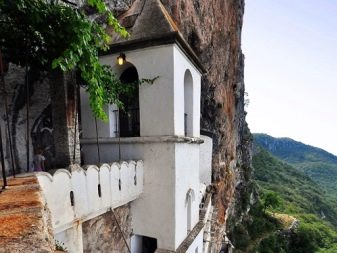
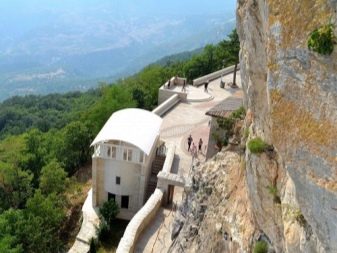
The Church of the Exaltation of the Cross has such a name, since it is believed that part of the cross on which Jesus was crucified was presented to the rectors of the temple during its construction... The temple is located in a cave, on the upper monastery floor. Its frescoes were painted by the Serbian artist Radul. And although it is damp inside the temple, the frescoes are well preserved. Their uniqueness lies in the fact that he worked on Radul's frescoes right on the walls of the rock. And they depict Saint Basil, Saint Sava, as well as episodes from the life of Jesus, religious festivities.
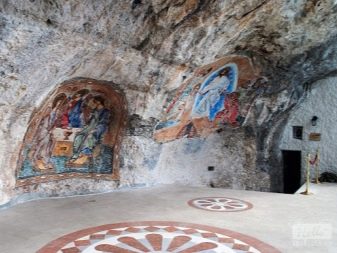
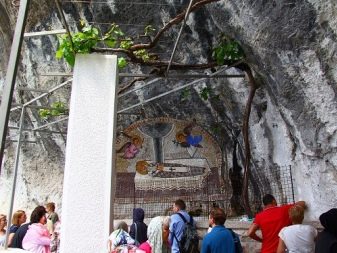
During the excursion, tourists will be interested to see:
- a shrine with the relics of St. Basil of Ostrog;
- a healing spring, water from which is free for every visitor;
- chains considered evidence of the healing of a person suffering from rabies (stored in the Holy Cross Church);
- fragments of a shell that fell into the temple during the Second World War;
- holy relics of 12-year-old Stanko.
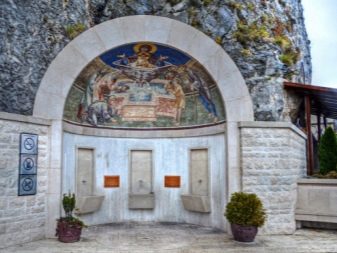
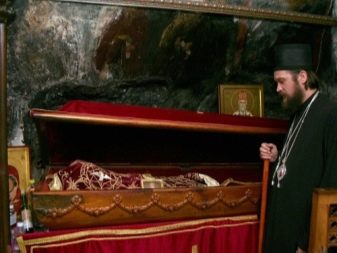
On the days of religious holidays, the number of pilgrims near the walls of the monastery becomes especially large. In the summer, most of them try to climb to the Upper Monastery on foot, although local minibuses offer the delivery service. If a believer is convinced, very religious, and he came to these places to ask for something from Saint Basil, he can walk the path to him barefoot or even on his knees.
On the day of Vasily Ostrozhsky's death, May 12, pilgrims try to spend the night at the monastery walls. By the way, the simplest bedding can be taken on the spot. An overnight stay is needed in order to catch the morning prayer. And although there is a pilgrimage room, which can hardly be called a mini-hotel, especially religious people prefer spending the night in the open air.
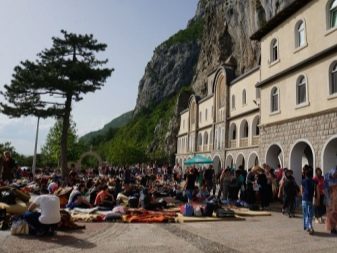

Ostrog souvenir shop
It would seem, what can be remarkable about the souvenir shop that operates at every monastery? But the assortment of what can be purchased in the Ostrog monastery shop really deserves attention. Candles, incense cartons and icons are a standard set for such places, but here you can still become the owner of brooches, silver and gold pendants with the image of a shrine, amulets.
You can buy honey, olive oil and wine here. As a souvenir of the trip, you can take away from here healing aromatic oils (really high quality), natural cosmetics. By the way, the latter, no matter how rude it may sound, could be just a marketing ploy, but its quality is really high according to the reviews of those who bought and used.
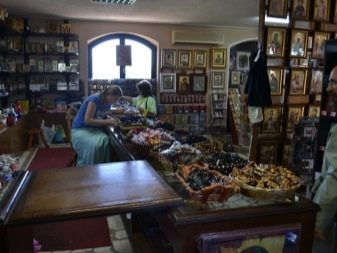
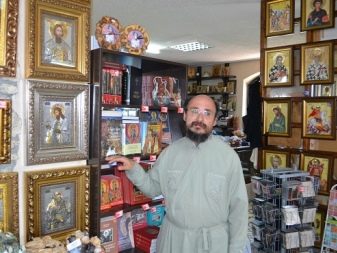
A little more about brojanits. This is the name of the special rosary that is worn on the hand. There is a cross in the place where such beads are woven; it can be plastic or metal. There are 33 knots in the brojanet, and each knot consists of 7 cross-weaves. This is a very strong and durable piece of jewelry that will cost a tourist a couple of euros. They are sold in several colors: black speaks of asceticism, white - of purity and innocence, blue will protect the owner from overvoltage, and red - from envious glances. The broaches are weaved from sheep's wool.
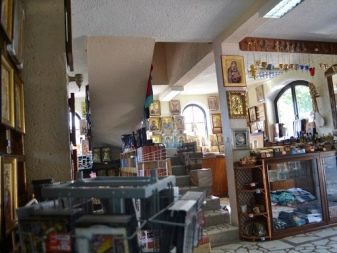
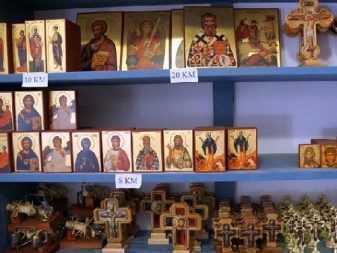
You can buy it not only for yourself - often these jewelry are taken in order to then present them as a gift to loved ones. They are usually worn on the left hand. There is an opinion that wearing a garment is tantamount to wearing a wearable Orthodox cross.
You can also buy rakia in the souvenir shop. This is the name of a strong drink, which is essentially a brandy. The strongest brandy is plum brandy, and there is also brandy made from apricot, quince, apples and grapes. Brandy is also made on the basis of honey and herbs. You can buy a drink in very beautiful bottles, so the drink is more than suitable for a presentation from the holy places of Montenegro.
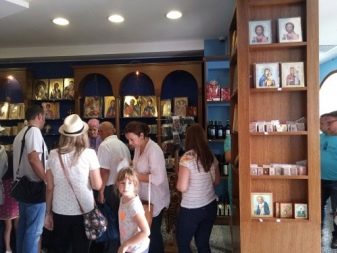

It is unlikely that you will leave the souvenir shop without buying local honey - mountain, forest, meadow, flower, linden ... The choice is very large and pleasant. Local seeds, pumpkin and sunflower seeds are added to the honey, the delicacy turns out to be very tasty. And if you buy honey with figs and nuts, you are unlikely to find something similar somewhere else.
Monks make from the fruits of local olive trees and olive oil. You can also buy wine here: Vranac (red) and Krstach (white). And next to him in a good assortment of medicinal syrups. Cosmetics are made from goat milk, beeswax and mountain herbs. Water for cosmetics is taken straight from a healing source.
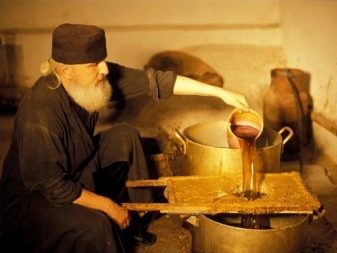
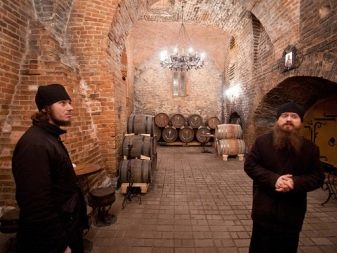
In a word, it is worth taking more money for such an excursion, because the monastery shop pleasantly amazes with its assortment.
How to get there?
In Budva, a tourist can rent a car, which greatly facilitates further route logistics.Several highways lead to the monastery, each of which can be reached: one goes through Danilovgrad, the other from Bogetici, and the third from Niksic. The road through Danilovgrad is considered by many to be the safest for tourists who are not tempted by serpentines.
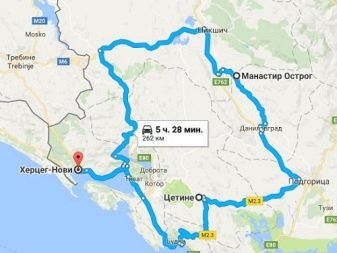
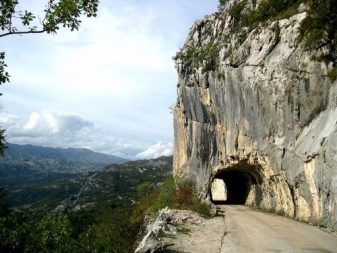
The second way is to use public transport services. There is no direct connection from Budva to Ostrog, strange as it may be. Therefore, the path will consist of several stages:
- from Budva to Podgorica by bus (one and a half hours);
- from Podgorica to Ostrog by train (40 minutes);
- from the railway station to the monastery on foot or by taxi: on foot it will be about an hour and free of charge, by taxi - 15 minutes and about 20 euros.

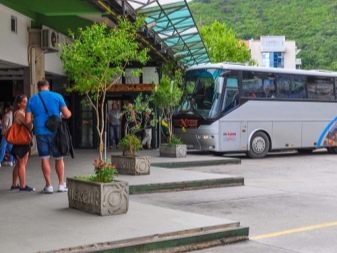
If you get there on your own, outside the excursion group, be sure to secure travel expenses (transport will have to be changed), for unforeseen expenses. View the future route on the map in advance.
But don't worry: the quality of transport here is very good, even a simple train will seem very comfortable to you, where everything is thought out for the convenience of the passenger.
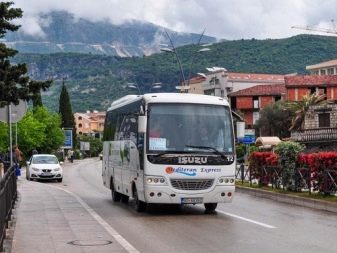
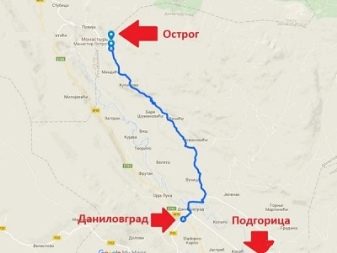
Many tourists consider the path from the Dabovichi railway station directly to the monastery to be the most interesting part of the route. The length of this trail is about 4 km, the entire path is an asphalt road, walking along which vineyards and farms will open to your eyes. There is also the possibility of hitchhiking. But this path is simply created for walking - amazingly beautiful views, changing landscapes.
Be sure to recharge your phone the day before you travel, or take your camera with you.
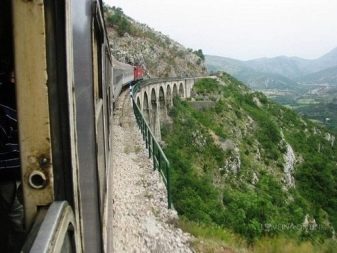

And there is also a path from the Ostrog railway station, which, although shorter, is more difficult to overcome. The quality of the trail is so difficult in places that you will have a hard time without trekking shoes. Hitchhiking is excluded, infrastructure along the way is in the red.
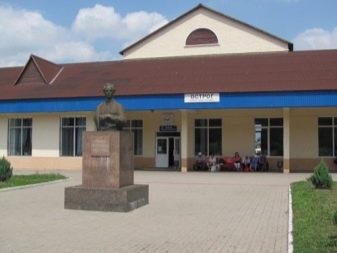

Visiting rules
Remember that defiling the feelings of believers is not just words and a reason for contention. Therefore, try to comply with all the rules for visiting the Ostrog Monastery. These are, first of all, clear requirements for clothing. Shoulders and knees, no matter how hot it is, should be covered for both women and men. You can use T-shirts and shorts on the road, but on the territory of the monastery this outfit will have to be changed to shirts and trousers for men, as well as skirts and shawls on the shoulders for women.
But it is not necessary for women to cover their heads in this place, no one will condemn them for an uncovered head (although most Orthodox tourists and pilgrims still use a headscarf).
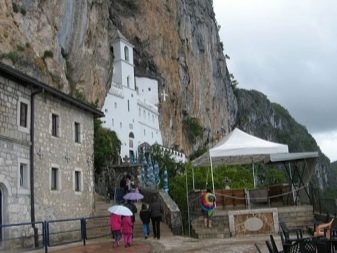
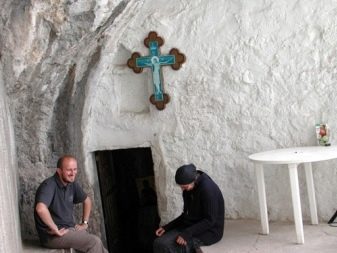
It is forbidden to smoke on the territory of the shrine, bring pets with you. Filming and photographing inside the temples is prohibited.
Also prepare yourself for the fact that some of the moments may not be familiar to you. For example, candles are not placed here under the icons in the church - they are placed outside the church, in special boxes with sand and water. Also, trust is built on how many candles you took, whether you paid their cost - no one checks this.
If you decide to stay in a pilgrim house, you will be accommodated in a room that can accommodate 10 guests at a time. There are beds, a common area for washing, a kitchen-dining room (it is possible to make coffee, warm up food).
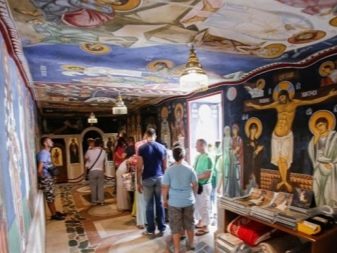

For many years people from different countries go to Vasily Ostrozhsky for help, often in the hope of a miracle. And this happened even during the life of the priest: he gave shelter to the homeless, fed the hungry, and finally helped with advice. Many people, according to the responses, received physical and / or mental healing after visiting the shrine. There is evidence of the healing of mentally ill people. If deep faith calls you to these places, then you need to visit every corner of the monastery, and the pinnacle of the pilgrimage will be a touch to the miraculous relics of Vasily of Ostrog. But an ordinary tourist will surely remember this unique place.
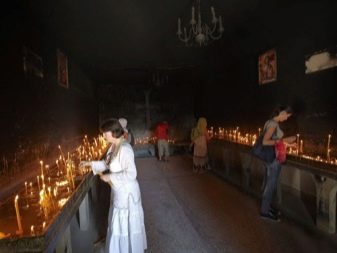

An overview of the Ostrog monastery in Montenegro in the video below.








